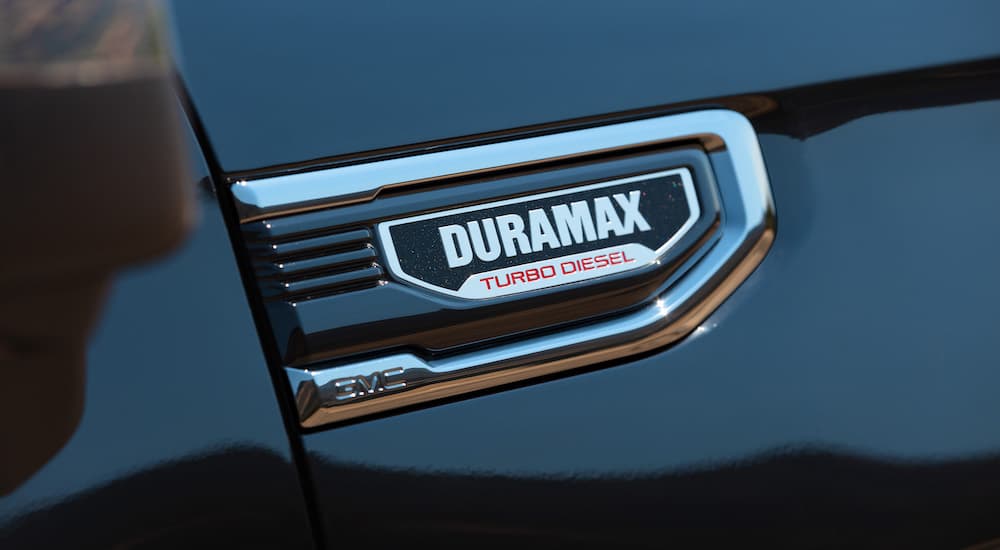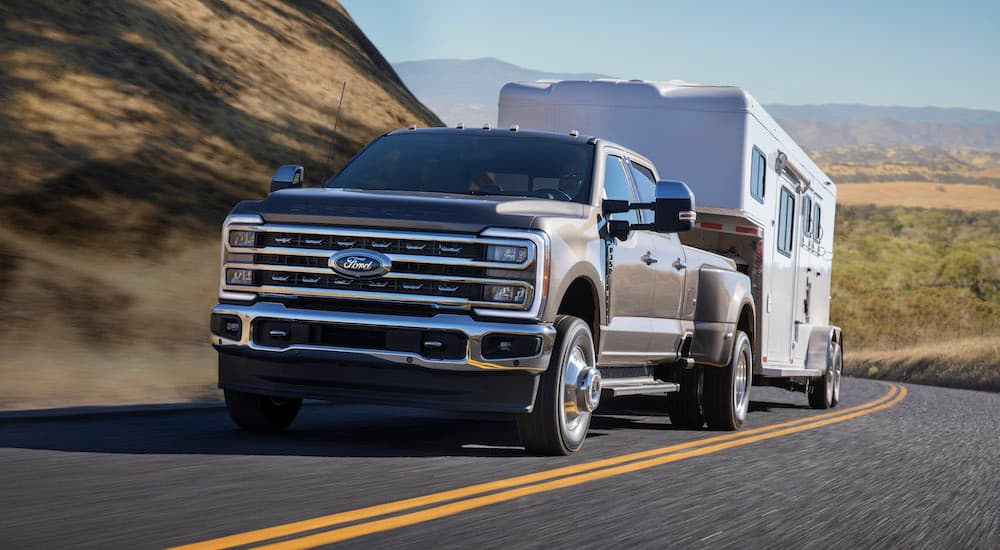From improved efficiency and durability to lower maintenance costs and increased torque, diesel engines offer a number of advantages over their gas-powered counterparts. That said, there are a few downsides to this alternative fuel technology. Diesel tends to be more expensive than regular gasoline, and diesel engines can also be a little noisy. However, it’s the emissions-related consequences that I want to focus on today. While diesel is often cited as a more environmentally friendly alternative to gas engines, that’s not entirely true. Diesel-powered vehicles do produce lower levels of CO2 and carbon monoxide but are also notorious for emitting another harmful gas in the form of nitrous oxide (NOx). This highly reactive gas, which is technically a combination of both nitric oxide (NO) and nitrogen dioxide (NO2), not only pollutes the air, water, and vegetation, it can also cause acid rain and have a detrimental effect on respiratory health with prolonged exposure leading to chronic lung disease, not to mention eye, nose, and throat irritation.
In order to address these adverse effects, automakers have designed diesel vehicles with a Selective Catalytic Reduction (SCR) system that uses a specialized fluid that helps to drastically reduce the amount of NOx that makes its way out of the tailpipe. Diesel Exhaust Fluid (DEF) plays an important role in the operation of any diesel engine, working in tandem with other diesel emission systems components, like a Diesel Oxidation Catalyst (DOC) and a Diesel Particulate Filter (DPF), to keep the air clean while still allowing drivers to leverage the sort of power, efficiency, and performance that only a diesel engine can offer. All of these acronyms might be a little overwhelming if you’re just jumping into the world of diesel-powered vehicles, but as always, CheckEngine’s got your back. Let’s explore the finer points of today’s diesel emissions systems and see how SCR, DEF, DPF, and DOC all work in tandem to make for a cleaner, greener engine.
Selective Catalytic Reduction (SCR)
In order to understand the importance of DEF, we first need to get to know the Selective Catalytic Reduction (SCR) process. SCR involves using a catalytic converter and introducing a reducing agent like DEF into an exhaust system in order to reduce NOx emissions. The SCR system includes a DEF tank, DEF lines and pumps, as well as a DEF injector and a catalyst. While all modern vehicles are outfitted with a catalytic converter that minimizes carbon monoxide and hydrocarbons, vehicles employing SCR rely on an additional catalytic converter that’s specifically designed to address NOx.
What Is Diesel Exhaust Fluid (DEF)?
Diesel Exhaust Fluid (DEF) allows drivers to take advantage of the benefits of diesel technology without creating excess pollution. DEF is stored in its own tank next to the fuel tank and enters the exhaust system before hitting a catalyst that accelerates the process. When injected into a vehicle’s exhaust system through the selective catalyst reduction (SCR) system, the urea in DEF converts into ammonia, which causes a chemical reaction that causes NOx to be broken down into relatively harmless nitrogen, water, and carbon dioxide. This approach works a treat, with DEF reducing NOx emissions by as much as 90 percent. DEF is essential in allowing engines to meet the emissions diesel-related emissions guidelines set forth by the EPA in 2010 as part of the Diesel Emission Reduction Act (DERA) and is legally required on all new diesel vehicles.
DEF might fulfill a unique role under your hood, but it’s actually a relatively simple formula. DEF, also known as Aqueous Urea Solution 32% (AUS32), is composed of 67.5 percent de-ionized water and 32.5 percent urea. Urea is a natural chemical compound that’s found in the waste products of all mammals and some fish, though it can also be produced artificially in a lab. DEF is a relatively safe solution that’s non-toxic, non-hazardous, and non-flammable. It can easily be found at any auto parts store and most gas stations.

What Are the Advantages of DEF?
DEF doesn’t just dramatically reduce a diesel engine’s emissions. It also plays an important role in terms of fuel efficiency and longevity. DEF can improve a diesel’s fuel economy by as much as three or four percent by reducing an engine’s reliance on Exhaust Gas Recirculation (EGR). It might not sound like much, but it can certainly add up when you sit down to calculate your annual fuel costs. In addition to offering increased fuel economy, DEF can also protect a diesel engine from undue wear and tear by reducing the amount of contaminants in the fuel. When properly cared for, a diesel engine can last between 400,000 and 800,000 miles, a dramatic improvement over the 200,000-mile average of the typical gas engine.
How Often Should It Be Replaced?
Some budget-conscious drivers might be asking if they can get away without using DEF. DEF plays a crucial role in allowing diesel engines to meet stringent emissions requirements, but it’s not actually used in all diesel-powered vehicles. While vehicles produced before 2010 are allowed to operate without DEF, newer models are built with a number of fail-safes that prevent drivers from hitting the road without the crucial emissions control fluid. Most modern diesel-powered vehicles, typically pickups, may not even start without a healthy dose of DEF. Others might limit a vehicle’s top speed until DEF is added, which is why it’s always a good idea to keep a spare bottle handy. A dashboard light will let you know when you’re running low, though generally speaking, your DEF should be replaced every time you perform an oil change. Studies have shown that the typical diesel vehicle consumes around 1 gallon of DEF for every 1,000 miles it spends on the road. A truck that’s regularly called on to perform towing, hauling, and other heavy-duty tasks might consume DEF at a higher rate, which is why, in such cases, it’s important to stick to the severe driving maintenance schedule set forth in your owner’s manual.
DEF can be stored in a cool, dry location out of direct sunlight for up to two years, though some recommend a shorter, one-year limit in order to ensure consistent performance. DEF’s freezing point hovers around 12° Fahrenheit, so drivers in colder climates might need to invest in a supplementary heating system or keep their vehicle stored in the garage to avoid having their DEF tank turn into a solid block of ice. I’d also advise against making your own homebrewed DEF in a bid to save a couple of bucks. While drivers can technically source their own urea and deionized water, it’s generally not worth the hassle of sourcing ingredients of the correct purity, with DEF selling for as little as $6 a gallon.
DEF Filter
The urea used in DEF can perform some impressive emission-related alchemy, but it also tends to leave a byproduct in the form of small crystals. These crystals can gunk up the DEF injector pump or SCR catalyst and impact the system’s ability to quickly and efficiently rid the exhaust of harmful emissions. DEF filters solve this problem by keeping the crystals from clogging the pump and catalyst. The filter is relatively affordable and easy to replace at a cost of around $40. Drivers should try to replace the DEF filter every 200,000 miles, though some experts recommend an accelerated schedule of 100,000 miles.

Diesel Particulate Filter (DPF) Vs. Diesel Oxidation Catalyst (DOC)
The DEF filter is just one of three filters used to scrub your exhaust of harmful emissions. The Diesel Particulate Filter (DPF) is designed to trap particulate matter, while the Diesel Oxidation Catalyst (DOC) focuses on converting gases like carbon monoxide (CO), hydrocarbons (HC), and nitrogen oxides (NOx) into less harmful forms.
While the DOC is technically referred to as a filter, it’s a lot more complex than the paper filters you’ll find elsewhere in your vehicle. The DOC relies on a complex chemical reaction to turn carbon monoxide into carbon dioxide and hydrocarbons into water vapor by passing them through a catalyst made from a rare earth metal like platinum. While a DOC should be regularly inspected, it should last between five and ten years between replacements, with a replacement ringing in around $1,500 to $2,000, depending on the make and model.
The DPF is responsible for dealing with the solid contaminants found in a vehicle’s exhaust. These particles, commonly referred to as soot from the exhaust, are trapped by the DPF, where they can be burned off through prolonged exposure to high temperatures. A good DPF should last up to 150,000 miles, though that number depends on several factors, including driving style, filter quality, and more. A DPF replacement can run anywhere between $1,000 and $4,000, though most tend to be on the lower end of the spectrum.
Exhaust Gas Recirculation (EGR)
SCR isn’t your vehicle’s only weapon when it comes to fighting off harmful emissions. Many diesel-powered vehicles are also outfitted with an Exhaust Gas Recirculation (EGR) system that curbs emissions by recirculating some of the exhaust gas back into the engine itself. When this exhaust gas is recirculated, it reduces the engine’s combustion temperature and a vehicle’s NOx and carbon monoxide emissions. Still, there are some disadvantages. EGR can reduce a vehicle’s fuel economy and take a toll on overall performance, which is why some automakers forgo the technology altogether in favor of a more robust SCR system. Most vehicles come standard with an EGR system, though there are some notable exceptions. Many military-grade pickups bypass the EGR valve in a bid for improved performance. However, civilians seeking to avoid the emissions-reducing tech won’t find many options at their local dealerships.
While it’s no wonder fuel, sometimes there’s just no substitute for a diesel-powered vehicle. Diesel could be worth a closer look if you’re in the market for a hardy vehicle that can tow and haul with the best of them while still achieving some thrifty MPG at the pump. That said, drivers will have to familiarize themselves with a whole new glossary of terms if they want to keep their diesel engines in tip-top shape. From SCR and DEF to DPF, DOC, and more, diving into a diesel means decoding a long list of emissions-related acronyms. Understanding the finer points of DEF and the SCR system can help avoid failed inspections and create a greener road ahead. Still, drivers should always factor in the related costs and maintenance duties before investing in their first diesel. Keeping a steady supply of DEF on hand and regularly replacing your filters isn’t that much to ask, and it is a small price to pay for the efficiency and power a diesel can offer.

